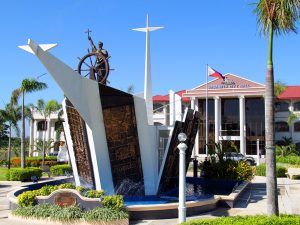History

It was on January 8, 1858 that the Urdaneta was organized into a pueblo. The first “cura parroco” was Niclolas Alonzo Manrique. He named the new town as Urdaneta, in honor of another friar Fr. Andres de Urdaneta, the spiritual adviser of the expedition led by Miguel Lopez de Legazpi which arrived in Cebu to explore the country on April 27, 1565.
Historical records show the first inhabitants, mostly Ilocano migrants, established contiguous settlements occupying portions of the barrios of the surrounding towns of Asingan, Villasis, Malasiqui, Sta. Barbara, Mangaldan, Manaoag, and Binalonan. The settlers banded together and petitioned the Spanish Government to allow them to form a separate pueblo for greater ties and stronger unity. Their petition was granted and Urdaneta was formally founded on January 8, 1858. On January 10, 1998, the Philippine Congress enacted R.A. 8480 converting the Municipality of Urdaneta into a component city of the Province of Pangasinan. The people of Urdaneta, in a plebiscite, overwhelmingly ratified this legislative act and Urdaneta was proclaimed a city on March 21, 1998.
Population/ Language/ Area
Urdaneta City has a total land area of 100.26 km2 (38.71 sq mi). Due to its location, the city is experiences two pronounced seasons: dry from November to April and wet during the rest of the year. Maximum rainfall is observed in August. Average monthly temperature is 27.91ºC with the highest occurring in May and the lowest in January.
According to the 2010 census, it has a population of 125,451 people, with a land area of 12,100 hectares. Gateway to Northern Philippines, the City’s strategic location is on the central part of eastern Pangasinan.
Products and Services
Prominent industries are bagoong making, handicrafts and gifts, toys and houseware making.
Business Opportunity
Businesses to be established should take advantage of the city’s location and agricultural economy. Being the trading center of agricultural products, a modern cold storage complex should be put up. Agro-industrial plants such as meat processing, corn milling and processing, fruit processing, feed milling and fertilizer production, and manufacture of farm implements are some of the businesses sectors that might be a good source of income in the city.
